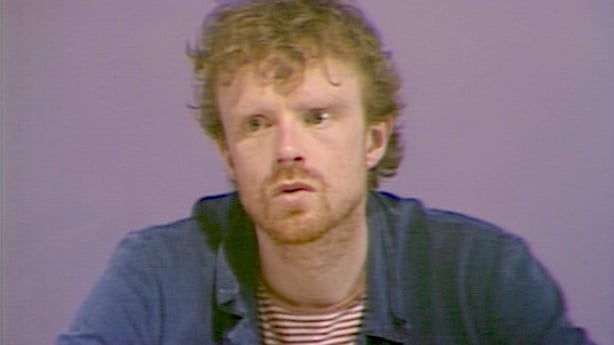Filmmaker Frank Sweeney introduces his new documentary Few Can See, which explores the legacy of Irish and British censorship of the conflict in the north of Ireland - watch the trailer above.
Few Can See screens for the first time in Dublin on Wednesday the 4th of December at the IFI. The film looks at broadcast censorship of the conflict in the north of Ireland, imposed by both Irish and British governments. In Ireland, the government under Section 31 of the Broadcasting Act, instructed RTÉ not to broadcast "any matter that could be calculated to promote the aims or activities of any organisation which engages in, promotes, encourages or advocates the attaining of any particular objectives by violent means." The measure was part of a suite of authoritarian measures in the early 1970’s which attempted to prevent the conflict from spilling over the border.
'Caution lay like a thick cloud over everything.'
-Journalist Mary Holland in 1978, on censorship at RTÉ.
Some at the station initially tested the limits of Section 31, but after a journalist was jailed and the entire RTÉ Authority was sacked by the government, a culture of self-censorship developed at the broadcaster. This resulted in an interpretation of the legislation which prevented people and groups with often tenuous connections to Sinn Féin from speaking on a variety of issues, often unrelated to the conflict. In an NUJ report on censorship in RTÉ from 1977, journalists describe an ‘ultra-cautious atmosphere whereby enquiries into controversial areas were not encouraged’. In his book Irish Media: A Critical History, John Horgan writes that censorship created ‘a yawning gap in the electronic media archive for more than twenty of the most politically significant years in 20th century Ireland.’

legacy of censorship in contemporary narratives about the conflict in Ireland and Britain.'
When research first started on this project in 2020, I was immediately drawn to former RTÉ producer Betty Purcell’s memoir Inside RTÉ. Purcell was one of a small number of people at the station who campaigned tirelessly against censorship, and her book describes many occasions when interviews could not be recorded, or broadcast because of Section 31 and a culture of self-censorship.
Read More: 30 years on, a short history of Ireland's Section 31 broadcasting ban
Few Can See attempts to recreate some of the censored material described in Purcell’s book and elsewhere, which is now absent from broadcasting archives. To do this, we conducted contemporary oral history interviews with people from censored groups, created a script based on verbatim transcripts of these interviews and actors then reenacted these interviews within a 1980’s television format. This process was inspired by the use of actors to dub interviews censored under similar legislation on British broadcasters. Although we went to great lengths to faithfully recreate a television show from this era with sets, costume, hair, make up and old broadcasting equipment, we of course can never replace what was not recorded and preserved at the time.

When Few Can See was first screened in September 2023, the hope was that the film might help us think through the legacy of censorship in contemporary narratives about the conflict in Ireland and Britain. It's hard to talk about the film now without thinking of the ongoing censorship of voices in support of Palestinian liberation. The systemic censorship by social media companies, accusations of pro-Israel bias by BBC staff, or the silencing of cultural workers and academics in Germany and the U.S. are just a few reminders that censorship in all of its forms, remains an important part of allowing colonial violence to continue.
The Dublin premiere of Few Can See takes place at the Irish Film Institute, Dublin at 6:30pm on Wednesday 4th December, followed by a Q&A with Frank Sweeney and former RTÉ producer Betty Purcell, hosted by film critic Ruairí McCann. Find out more here.
The views expressed here are those of the author and do not represent or reflect the views of RTÉ
